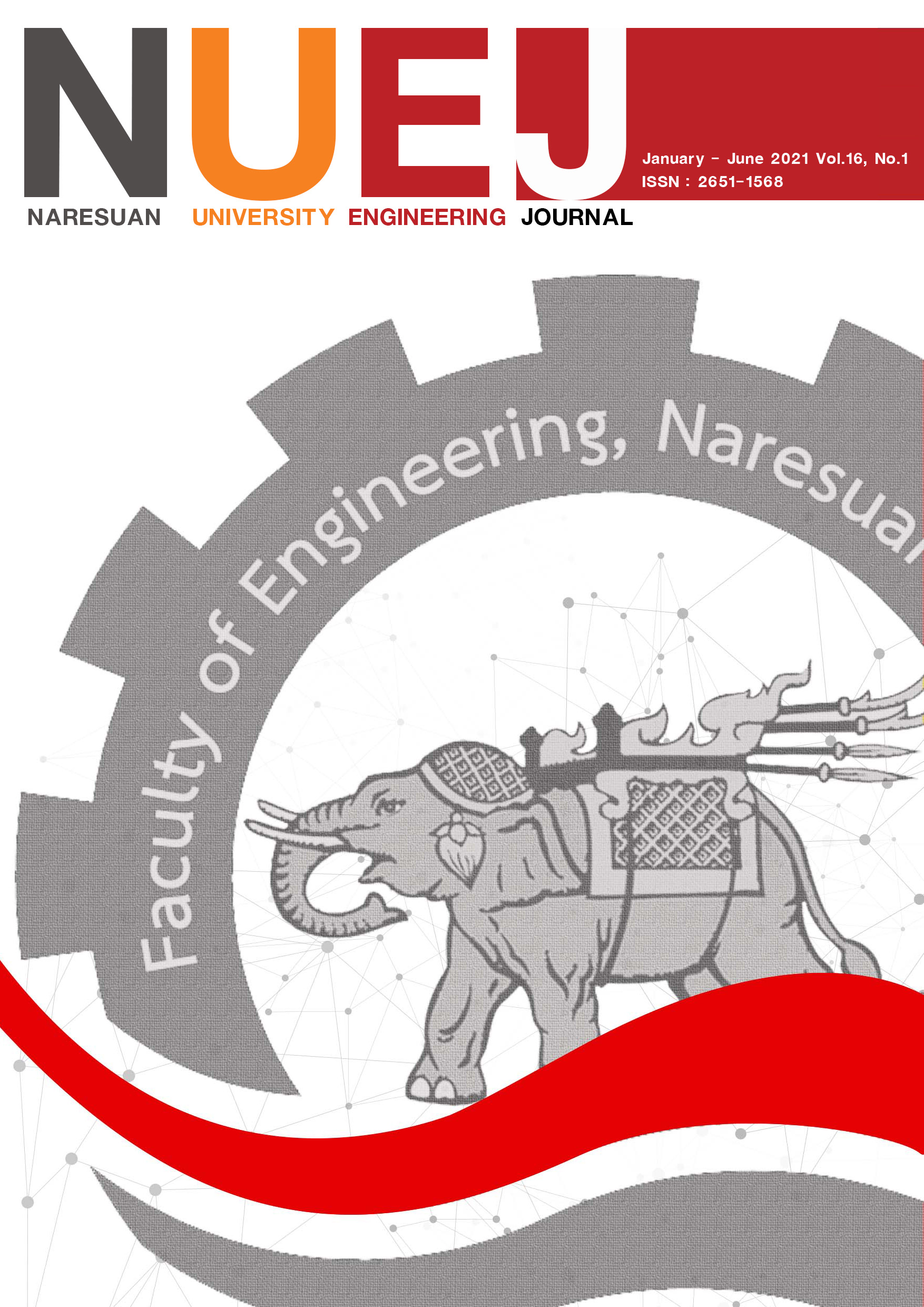Utilization of PU Foam Insulation Waste to Air Purifier Filter
Main Article Content
Abstract
In 2017, Thailand’s electronic waste production reached 0.4 million which included refrigerator waste. Refrigerators that are no longer required are sorted and separated to recycle valued parts, while over 20,000 m3 of rigid polyurethane (PU) insulating foam is discarded in community dumping sites or illegally burned. This research aimed to add value to the PU foam waste by adopting it as an air purifier. Thus, we designed and constructed a prototype of a portable air purifier embedding a filter to trap PM2.5 made from PU foam. Our designed 36x36x78-cm3 air purifier was made from aluminum and covered with galvanized iron flat sheet. It was equipped with a 220-W centrifugal fan and griller tower to distribute dirty air evenly. An air filter cartridge was a 31x5x44-cm3 aluminum frame filling with three individual PU foam shapes, including stripe, cubic and ball. We evaluated the air purifier performance, in terms of a clean air delivery rate (CADR) for removal of PM2.5. Test particles were generated by burning an incense stick in an 8-m3 test chamber to achieve an initial concentration of 250 µg/m3. CADRs were determined by fitting 1.5-h concentration profiles to mass balance models, using nonlinear regression. At the end of testing, the PM2.5 concentrations were as low as 3-43 µg/m3. The CADRs for the stripe, cubic and ball shapes were 14.3, 18.6 and 21.3 m3/h, respectively. The ball-shape filter exhibited the similar CADR to the 35-Watt HEPA commercial air purifier. An additional prefilter sheet helped to increase the CADRs for all PU foam filter shapes by 50-90%. The production cost is 5,000 baht. It is noteworthy that the expired PU foam air filter can be ultimately used as an aggregate for lightweight concrete
Article Details
References
Association of Home Appliance Manufacturers. (2006). Method for measuring the performance of portable household electric room air cleaners (ANSI/AHAM AC-1). (n.p.)
American Society for Testing and Materials. (2009). Standard test method for determining air change in a single zone by means of a tracer gas dilution (ASTM E741). (n.p.)
Godish, T. (1989). Indoor air pollution control. 3. Lewis Publishers.
Kruewan, A., & Ongwandee, M. (2013). Evaluation of portable household and in-car air cleaners for air cleaning potential and ozone-initiated pollutants. Indoor and Built Environment, 22, 659–668.
Thailand Development Research Institute. (2018 August 20). Toxic waste of Thai industrial factories https://tdri.or.th/2018/08/industrial-waste/
Wassanadamrongdee, S. (2015). Situation of Electronic Waste Problems. Journal of Environment, 19(3), 1-18.
WITTHAYA-ANUMAS S. (2017 October). Management Electronic waste In Thailand. https://tdri.or.th/wpcontent/uploads/2018/04/wb133.pdf


